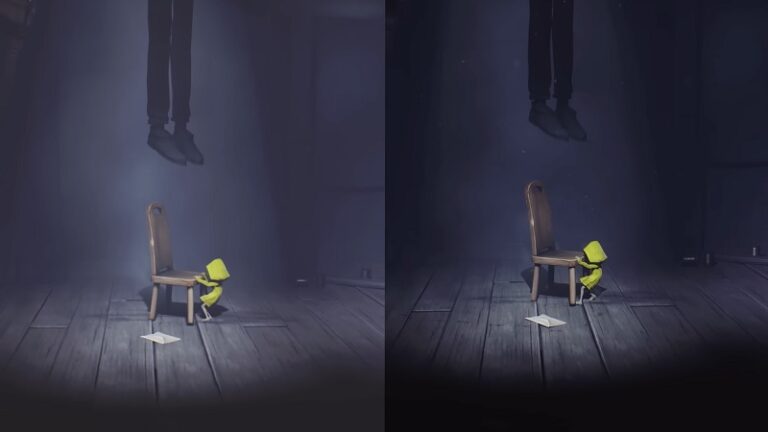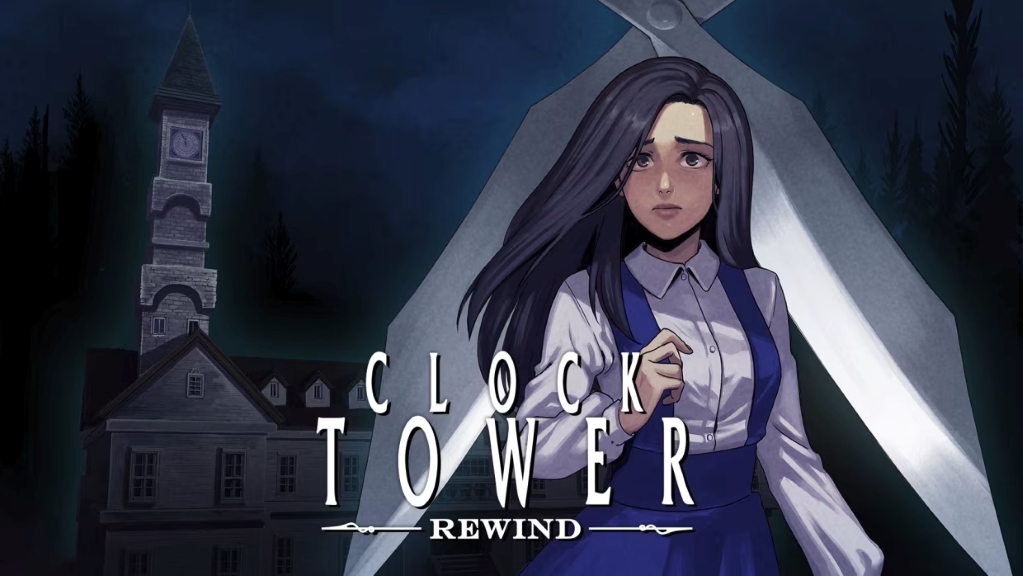
Human Entertainment’s 1995 horror adventure classic Clock Tower needs nearly no introduction to most fans of the genre, even though the game was never released outside of Japan. Its reputation preceded it as one of the earliest examples of cinematic survival horror, built on an aging and limited hardware platform on which most wouldn’t think it possible to produce a convincing and immersive cinematic horror game. It defied the odds of its ambitions and technological limitations to become something of a legend among fans of the genre, so this year’s Clock Tower: Rewind release is a bit of a big deal since it’s making the game officially available to English-speaking audiences for the first time.
In approaching this remaster, the studio and publisher worked together and contributed to what would hopefully become a complete, cohesive package that would have something to offer for long-time fans and first-time players alike. With 2D gaming masters, WayForward, handling the gameplay part, and the publisher handling the extra features and new bonus elements, Clock Tower: Rewind was promised to be a great look back at the game as well as its history, and a new way for the world to experience the a seminal game in the horror genre.
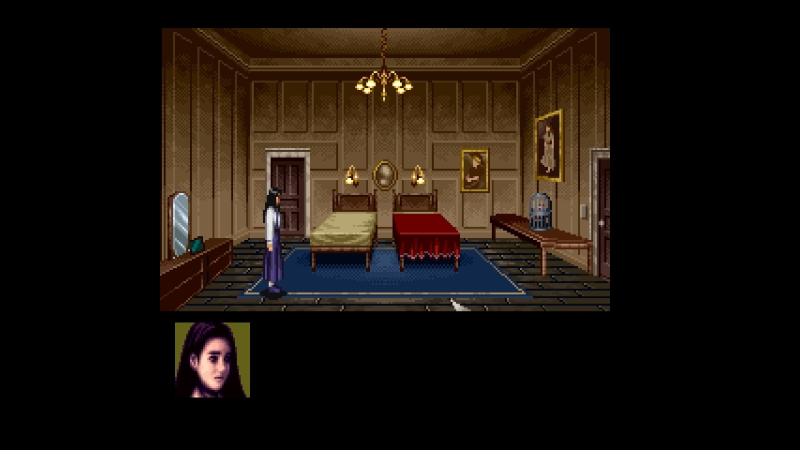
I was first introduced to the game back in 2002, shortly after the English fan translation patch was released, and it changed my perception of how horror could be conveyed in the medium of video games. Even though I had already played many other horror games on PS1 a few years earlier, including its sequel, Clock Tower 2 (confusingly titled Clock Tower in Western markets,) playing the original 1995 Clock Tower gave me much more perspective about horror games and what makes them tick.
Director Hifumi Kono’s clear inspiration from American and European horror movies of the 1970s and 80s struck a chord with my pre-existing love of those same films, and the game managed to merge the bizarre-yet-grounded worlds of those kinds of films with the immersion and interactivity of video games and the chilling soundscape to make what could only be described as transcendent of the medium at the time.
Needless to say, I approached this new remastered version with a little apprehension but also excitement that it would present a new way to play the game and add several new features to experience, so I’ve gone through with a fine-tooth comb as far as what this package offers to examine what it presents us in today’s gaming landscape.

Presentation:
Starting with the general presentation, we can start with how the game greets you, which is with an all-new anime-style intro cutscene with a fun and well-animated art style, and a new theme song made for the game, written based on the main musical theme of Clock Tower, and with new lyrics and vocals by Mary Elizabeth McGlynn. The song is generally a little underwhelming, but it’s nice to have some new content for the release that acts as an homage to the original game’s art style and mood.
Afterward, you’ll get to the main menu, which brings us to the subject of the menus in general, and as a whole, the menus are pretty well-done, with a few little caveats. The menus look great, but the controls on them can be a bit confusing when using a mouse and keyboard, even though they’re quite intuitive with a controller. KB&M forces you to use some awkward keyboard controls to navigate, constantly switching between requiring the WASD keys and the arrow keys, and then navigating the in-game controls is a whole other ordeal that will be discussed further in the controls section.
Another lacking feature of the menus is how some of the text descriptions of what different menu options mean or what the differences are between the “Original” and “Rewind” versions of the game are pretty lacking in clarity or detail. Additionally, the “How To Play” section is lacking clear explanation on some of the game’s more nuanced features, which might be a little confusing for new players, and can hopefully be updated at some point.

Game experience:
As previously mentioned, it’s worth delving into what the differences are between the two game modes this package offers, where Original mode is simply the original Super Famicom version of Clock Tower, exactly as it is on its original hardware. The only exceptions are the additions of mouse support, the save state feature, and the not-too-useful rewind feature, which allows you to rewind about 15-20 seconds of gameplay in case you made a bad choice, but it tends to only be of much use in a few specific situations, with the gameplay of Clock Tower being so slow in general.
On the other hand, the Rewind mode is closer to the PS1 remaster of the game, titled The First Fear, where many updates were made to the game, but this is absolutely not a port of the PS1 version by any means. While Rewind mode does put back in a deleted room and few of the minor deleted scenes that were restored for the PS1 version, most of its other quality-of-life features or updates were not brought along.
However, the ability for Jennifer to run up and down stairs and move faster in certain animations is added, and she heals faster, which makes a big difference in the gameplay, plus Scissorman’s aggressiveness has been amped up, his frequency has been made more frequent and random, and he can now climb stairs. However, the other features from First Fear are not present, including the improved visuals and sound, unique FMV cutscenes, and improved mouse controls. This makes the Rewind mode much closer to the “Deluxe” fan patch that was released by fans in 2023 with a few tweaks, rather than being more like the PS1 version.

This is a bit of a disappointment since The First Fear version improves the experience in every way, but for one reason or another, that version was not included in this package, even though the Rewind mode is still much better to play than the original.
Regardless, the core game experience is still here, plus the save state and rewind features which can come in handy or might be essential for some new players, and it’s still one of the best horror adventure experiences of all time, so there’s not much else to complain about here besides the “what could have been.”

Controls:
The controls are another source of contention here, specifically when it comes to the PC version, which could and ideally should be the best platform to play the game on, since most of the games in the series were designed to be played with mouse controls, but there’s a few botched opportunities here that muddle what could be the best way to play.
Unlike in the PS1 version, which made the game entirely playable with only the mouse, Rewind requires you to use the mouse and keyboard simultaneously, and the keyboard controls are awkward, with no ability to remap keys or commands whatsoever. There’s also no option to use a combination of a controller and mouse, so your only options are either the poorly-laid out keyboard controls with the mouse or just using a controller instead.

Hopefully, these control shortcomings can be fixed later, but right now, it feels like a blemish on what could’ve made this an ideal way to experience the game, so as it stands, the keyboard and mouse controls need some work. On a controller, everything works just fine, since the game isn’t very demanding or complex as far as controls go, as long as you don’t mind moving an on-screen mouse pointer with an analog stick or d-pad.
Either way, the game is still playable, but hopefully they can fix the keyboard controls or provide more options of how to customize your play in the near future.
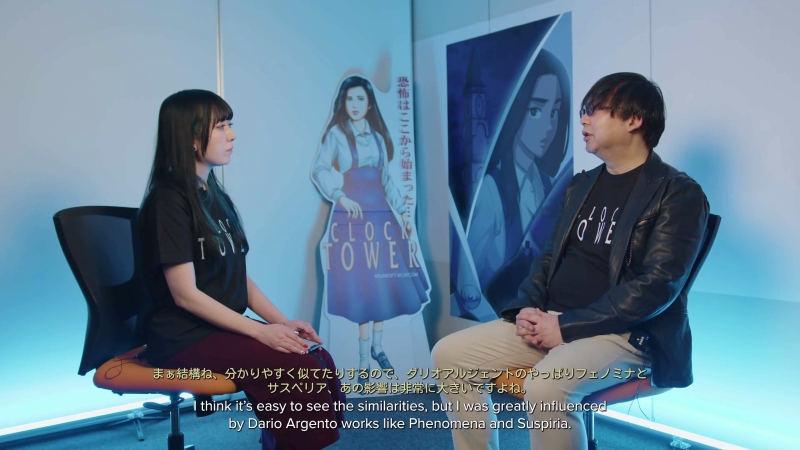
Extra features:
The extra features here are great additions, starting with a fun set of clips from a recent interview with director Hifumi Kono (done specifically for this release) about the history of the game and his thoughts on how this remaster was being handled. This results in somewhere around 30 minutes of footage to watch, and it’s a worthy extra to have.
There are also new motion comic adaptations of the original manga that were included in the First Fear booklet and a Japanese book for the game, with full voice acting and neat animation to go with it. These are nicely done, even if they’re fairly short, but similarly are a nice addition to the package.
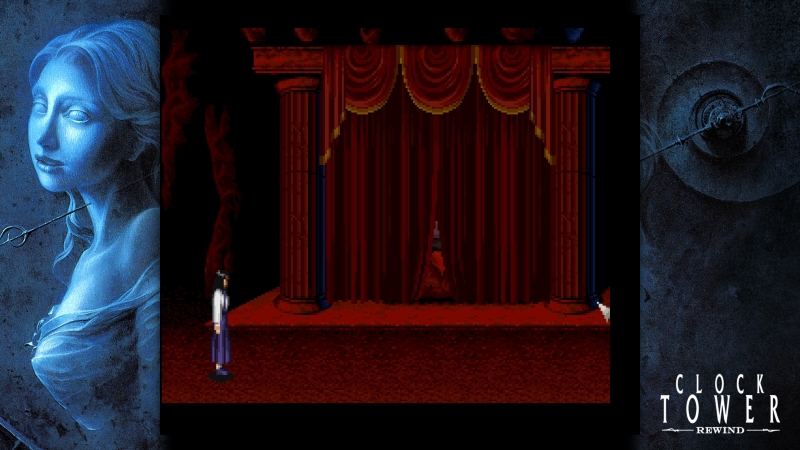
Lastly, there’s the included “Commercial Sample Demo” which was a demo version of the game that was sent to gaming publications and in some store kiosks that features a few small playable snippets of gameplay, which only amounts to a 10-15 minutes of extra play, but it’s nice to have it included in the package, even if it’s still in Japanese.
Despite a few perplexing decisions on how to approach this remaster of a classic, it opens the game up to an entirely new audience and still contains the core of the Clock Tower experience, which is just as fantastic of an experience after all these years and deserves a look from anyone who has or hasn’t played it yet. Especially for the low price, this is a no-brainer for fans of horror adventure games or for those wanting to experience a well-preserved version of an important early horror classic.
With a few updates to the PC version, it could be the best way to play the game outside of the PS1 port, so hopefully these updates will be made soon. But, regardless of how you choose to play, Clock Tower is still an experience any fan of the horror game genre should experience at some point in their life.
 (9 / 10)
(9 / 10)
Amazing
 (9 / 10)
(9 / 10)Rely on Horror Review Score Guide
A PC review code was provided by the publisher.

 IDOLxISxDEAD
IDOLxISxDEAD